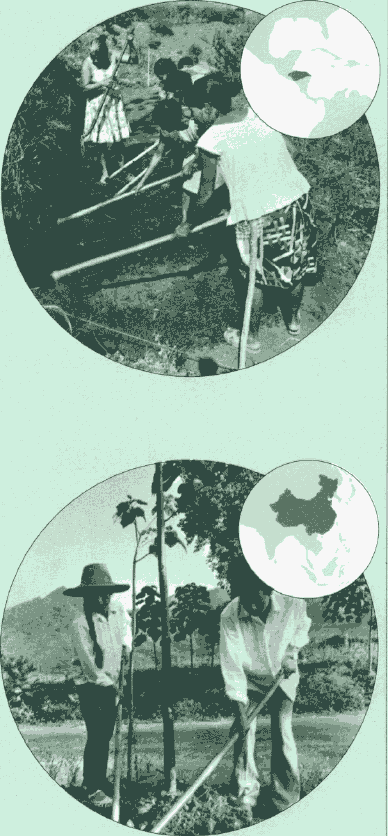
|
Honduras: women take the lead
After the arrival of Hurricane Fifi in 1974, the government called
on farmers to replant the destroyed areas. They were surprised but did
not object when groups of women showed up to work. The techniques to be
used were new to the area, introducing the idea of terracing and reforestation
or replanting rather than the traditional shifting agriculture. The men,
busy enough growing crops on the valley land, were distrustful of these
new ideas but agreed to provide plots of land for the women. Not only
did the women succeed in constructing terraces but they also grew, harvested
and marketed a series of successful vegetable crops. Eventually, the men
began to join in as well. In one area, after four years work, 78 villages
had joined the scheme and 1834 farmers worked on it. Of these, 590 were
women.
China: forestry for conservationBetween 1949 and 1978, China's forested area was expanded from 5 to 12.7 percent of total land area. Most of the work was done by rural communes, and much of it by women. In 1954, for example, women planted a shelter belt along the entire coastline of Kwangtung Province. In this area, men fish and women raise the crops. Women commune members led others in forming tree-planting groups in order to protect their fields from the sand that was regularly blown in from the coast. In China, forestry is well integrated with other economic activities, and most rural Chinese, particularly women, regard tree growing as important as growing other forms of crops. |


